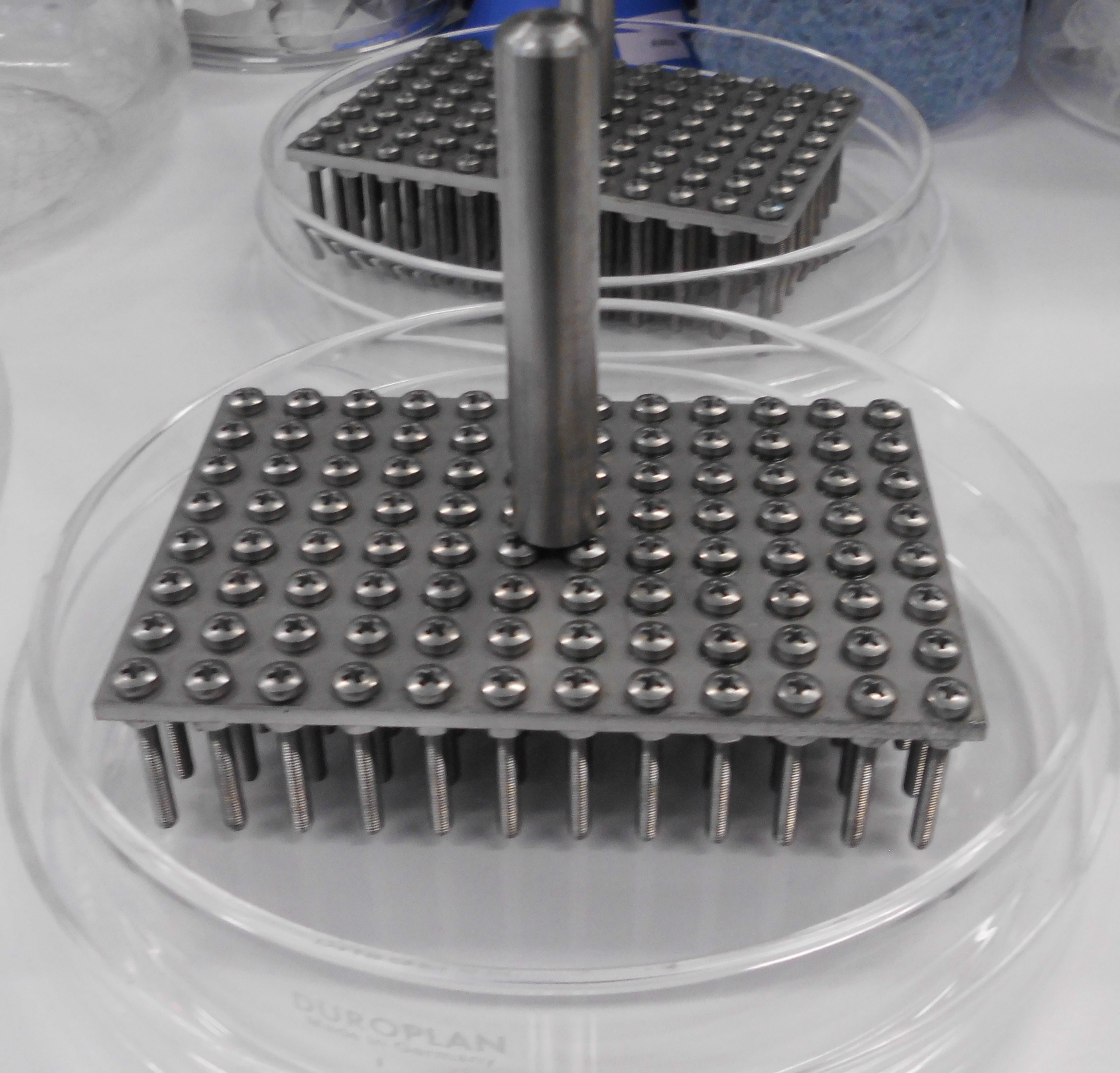Spot Analysis on:
[Wikipedia]
[Google]
[Amazon]
Spot analysis, spot test analysis, or a spot test is a

 A spot assay or spot test can also refer to a specific test in microbiology. This test is often used to check the growth rate of bacterial or yeast cells on different media or to perform serial dilution tests of micro-organisms. Usually a 96-pinner (often called frogger) is used to perform these spot assay.
Another application is
A spot assay or spot test can also refer to a specific test in microbiology. This test is often used to check the growth rate of bacterial or yeast cells on different media or to perform serial dilution tests of micro-organisms. Usually a 96-pinner (often called frogger) is used to perform these spot assay.
Another application is
chemical test
In chemistry, a chemical test is a qualitative property, qualitative or Quantitative property, quantitative procedure designed to identify, quantify, or characterise a chemical compound or substituent, chemical group.
Purposes
Chemical testing m ...
, a simple and efficient technique where analytic assays are executed in only one, or a few drops, of a chemical solution, preferably in a great piece of filter paper, without using any sophisticated instrumentation. The development and popularization of the test is credited to Fritz Feigl
Fritz Feigl (; 15 May 1891 – 23 January 1971) was a Jewish Austrian-born chemist. He taught at the Federal University of Rio de Janeiro.
Biography
Feigl was born and studied in Vienna, but owing to his military service in the First World W ...
.
Spot test or spot assay can also refer to a test often used in microbiology.
Chemistry
The foundations of Feigl's work on spot analysis were the works ofHugo Schiff
Hugo (Ugo) Schiff (26 April 1834 – 8 September 1915) was an Italian naturalized chemist. The son of a Jewish businessman and brother of the physiologist Moritz Schiff, Hugo Schiff was German by nationality. He discovered Schiff bases and o ...
(the earliest publication about "spot test" was Shiff's detection of uric acid
Uric acid is a heterocyclic compound of carbon, nitrogen, oxygen, and hydrogen with the Chemical formula, formula C5H4N4O3. It forms ions and salts known as urates and acid urates, such as ammonium acid urate. Uric acid is a product of the meta ...
in 1859) and of Christian Friedrich Schonberg and Friedrich Goppelsröder on capillary analysis.
On the occasion of Feigl's 70th birthday the Chemical Society of Midland sponsored a symposium in 1952, attended by 500 scientists from 24 countries, in which all plenary sessions were related to spot tests.
The test uses the qualitative characteristics of colored compounds to account for performed chemical reactions. This technique has been used to develop new quantification methods using modern technology.
Microbiology

 A spot assay or spot test can also refer to a specific test in microbiology. This test is often used to check the growth rate of bacterial or yeast cells on different media or to perform serial dilution tests of micro-organisms. Usually a 96-pinner (often called frogger) is used to perform these spot assay.
Another application is
A spot assay or spot test can also refer to a specific test in microbiology. This test is often used to check the growth rate of bacterial or yeast cells on different media or to perform serial dilution tests of micro-organisms. Usually a 96-pinner (often called frogger) is used to perform these spot assay.
Another application is high-throughput screening
High-throughput screening (HTS) is a method for scientific discovery especially used in drug discovery and relevant to the fields of biology, materials science and chemistry. Using robotics, data processing/control software, liquid handling device ...
, whichoften uses spot assays to determine the growth of eg. mated cells or to check for protein-protein interactions in a yeast two-hybrid test. This is often done with a robot.
See also
*Spot test (lichen)
A spot test in lichenology is a spot analysis used to help identify lichens. It is performed by placing a drop of a chemical reagent on different parts of the lichen and noting the colour change (or lack thereof) associated with application of th ...
* Touchstone
References
{{Authority control Chemical tests Analytical chemistry Measurement Brazilian inventions